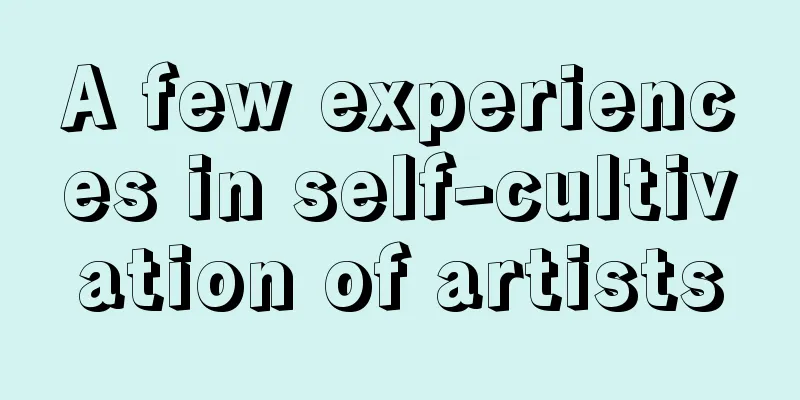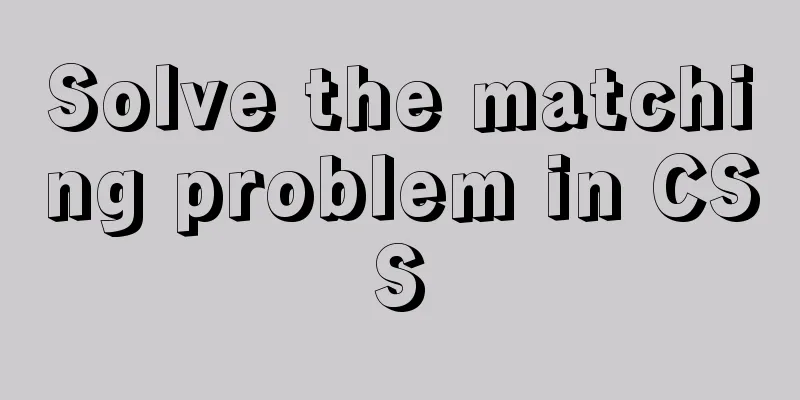A few experiences in self-cultivation of artists

|
As the company's influence grows and its products continue to improve, the related image design must keep up and need to be gradually improved, so we hired a fresh graduate graphic designer as a way to grow together. Fresh graduates are hardworking and willing to learn, but they also have unrealistic ambitions. Their starting points are similar, so how to cultivate their artistic talents becomes crucial. I would like to share with you some of my experiences in contacting and learning design, and hope to get more suggestions from you.
1. Color matching <br />In fact, the sense of color is the most basic quality a designer should possess. His works are widely used in web interfaces, system interfaces, product packaging, etc. Some basic theories, such as warm and cool colors, contrasting colors/complementary colors, color psychology, matching principles, etc., are everywhere. If you are interested, just search for one or two and take a look. For art designers, color is more of a feeling, just like the feel of shooting a basketball. This feeling can be developed through observation and practice. When Mars first came into contact with design, he would pay attention to the color matching of the signs of certain companies and restaurants on the roadside even when riding the bus. He always paid attention to the beauty of color matching in life. He can't even remember how many color screenshots he took. Mars believes that designers generally use colors in several stages: Primary stage: Use the 1-2 colors that you feel are the best, without considering other factors or other people's feelings; 2. Layout <br />In addition to having a good sense of color, graphic designers must also have a good grasp of layout. The quality of the combination directly affects the effect of the work. In fact, it is not difficult to do a good layout design. It is nothing more than the following steps: Layout preparation: Clarify what necessary text and pictures are needed for the main part of your content. Don't think too much about the details. 3. Details <br />The famous saying "Details determine success or failure" is even more important in the field of design. Many details may be overlooked by viewers, but designers must never miss them, such as background color, color gradient, spacing between components, title style, highlight style, font/size/color, line/paragraph spacing, illustration position/edge treatment, input box width and height/border color/background color, button position, etc. As before, only if you look at and compare more can you see these details. Some people think these details are not a big deal, but when multiple details are combined together, it makes people feel uncomfortable. For example, the following is a form for adding comments under an article in a certain system. The upper part is the program written directly by the programmer without any beautification (above), and the lower part is the form interface designed and beautified with the assistance of a designer (below). People with normal aesthetic taste would definitely think the following is beautiful, but they don’t know what’s good about it? Listen to Mars explain it from various angles: Color matching: The font color seems to be taken directly from the 32-color palette without any consideration; the form border color is too dark; the form background is the same as the page background, and there is no prominent hierarchy. 4. During the accumulation stage, you should keep a calm mind, be steady and patient, and avoid being impatient. Art design itself is a delicate job, and there is no use in being anxious. With a basic aesthetic view, you need to relax when creating, do what you want to do, eat what you want to eat, follow your heart, and provide yourself with an environment for creative inspiration. Don't just sit in front of the computer and think about it. You will get half the result with twice the effort and will end up depressing yourself. 5. Skills: With a good aesthetic foundation and creativity, the next step is production. Compared with the cultivation of aesthetic values and the emergence of creativity, Mars feels that some tool skills are easy to learn. It is nothing more than a question of whether I use a pencil or a brush to draw. Here is a brief introduction to the tools Mars comes into contact with: Graphics skills: Photoshop (graphic processing, etc.), Illustrator/CorelDraw (vector graphics), Flash (animation), Premiere Pro (film and television post-production), etc. These are just application tools; 6. User Experience User experience generally appears in web design and system interface design. It is the interaction process between users and human-computer interface. The ease of interface operation directly affects the user's impression of the product. User experience is a higher requirement for art designers, and even goes beyond the scope of art designers. However, only when artists understand these can they design the interface layout, overall matching, etc. more reasonably. Mars knows the importance of user experience, but has not studied it in depth. However, Mars will record the convenience of other people's web pages and systems, and will reflect it in his own design next time. It can be regarded as an imitation stage. This is also the way Mars has always learned. Finally, I would like to state that Mars is not a professional designer and has no theoretical foundation. The above summary is all based on practical experience, and I hope to get more good suggestions. Notice: Thanks to Mars for his contribution. Original article: A few experiences in self-cultivation of artists |
<<: How to use CSS attributes to block mouse events (mouse clicks can penetrate upper elements)
>>: Compatibility issues when inserting audio files in HTML and playing them in browsers
Recommend
Detailed explanation of the initial use of Promise in JavaScript asynchronous programming
1. Overview The Promise object is a specification...
MySQL string splitting example (string extraction without separator)
String extraction without delimiters Question Req...
Vue-Element-Admin integrates its own interface to realize login jump
1. First look at the request configuration file, ...
Detailed explanation of publicPath usage in Webpack
Table of contents output output.path output.publi...
Improving the effect of hyperlinks in web design and production
Hyperlinks enable people to jump instantly from pa...
How to invert the implementation of a Bezier curve in CSS
First, let’s take a look at a CSS carousel animat...
Summary of Common Letters in Unicode
Most of the earliest computers could only use ASC...
How to use Navicat to export and import mysql database
MySql is a data source we use frequently. It is v...
Implementation of MySQL multi-version concurrency control MVCC
Transaction isolation level settings set global t...
JavaScript imitates Jingdong magnifying glass effect
This article shares the specific code for JavaScr...
Detailed explanation of CentOS7 online installation of Docker 17.03.2 using Alibaba Cloud Docker Yum source
Reference Documentation Official Docker installat...
Detailed explanation of the basic functions and usage of MySQL foreign keys
This article uses examples to illustrate the basi...
How to view the creation time of files in Linux
1. Introduction Whether the creation time of a fi...
React Native environment installation process
react-native installation process 1.npx react-nat...
Detailed explanation of setting static ip network card for CentOS 8 VMware virtual machine to access the Internet
first step: In VMware, click "Edit" - &...










